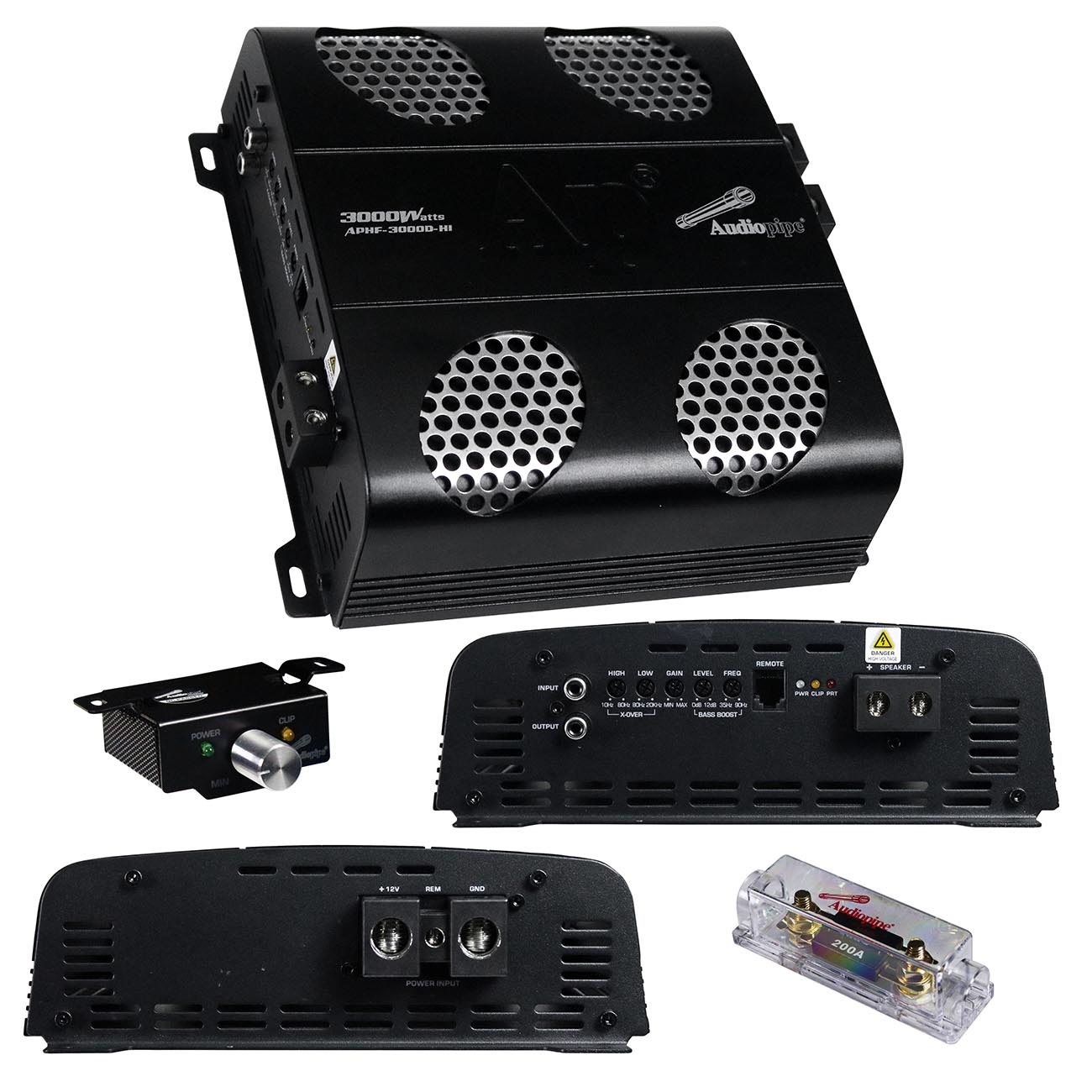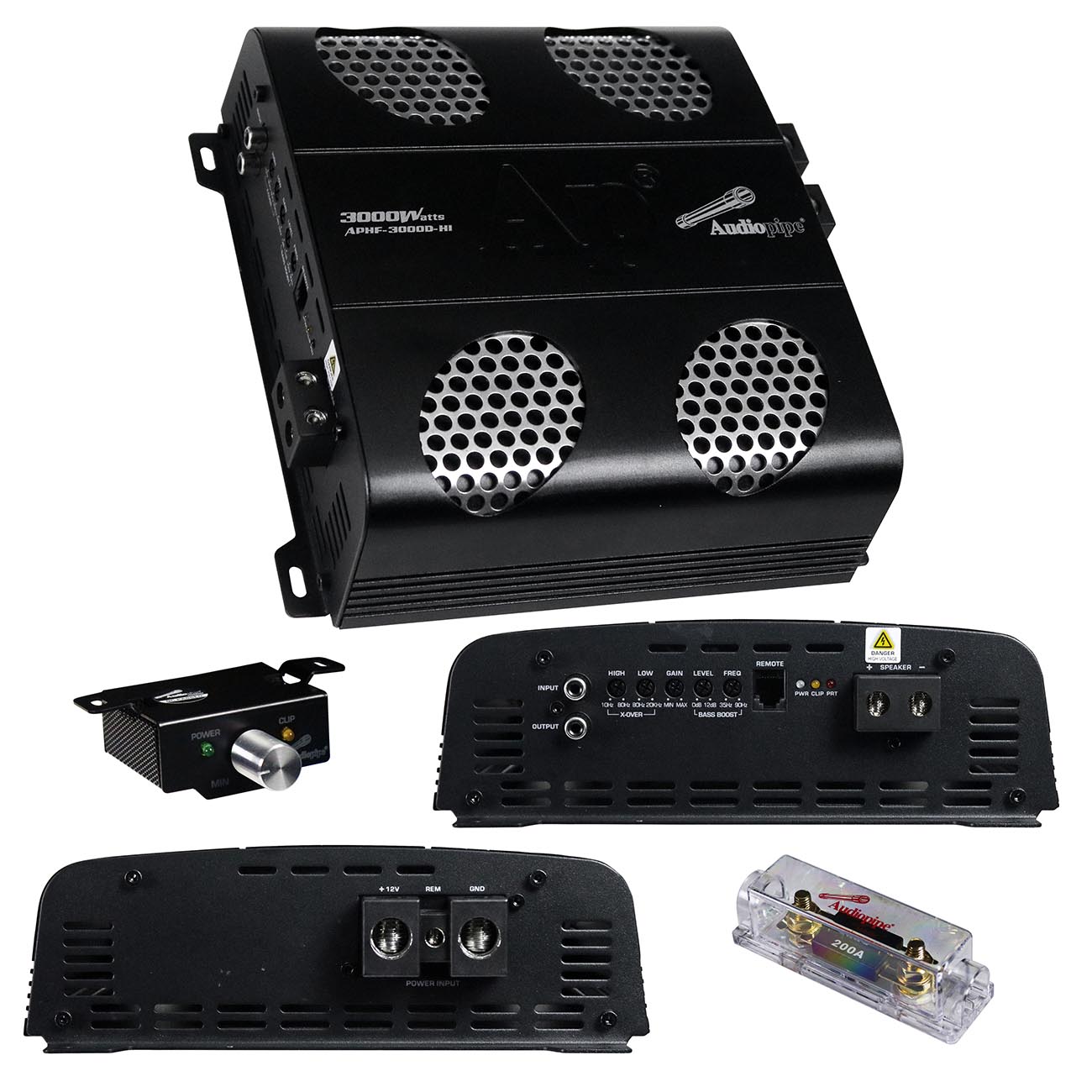Answer
Aug 21, 2024 - 04:17 PM
The terms "mono" (monoblock) and "Class D" refer to different aspects of an amplifier, and they describe distinct characteristics. Here’s how they differ:
1. Mono (Monoblock) Amplifiers- Definition: A mono or monoblock amplifier is a single-channel amplifier designed to output sound to a single speaker or subwoofer. "Mono" refers to the fact that it outputs a single audio signal (as opposed to stereo, which has two channels for left and right audio).
- Primary Use: Mono amplifiers are commonly used to power subwoofers in car audio systems because subwoofers typically require high power and do not need stereo separation.
- Power Output: Since a mono amplifier dedicates all its power to a single channel, it can deliver a high amount of power, which is ideal for driving large subwoofers that require significant wattage.
- Impedance Flexibility: Monoblock amps are often stable at low impedances (e.g., 2 ohms, 1 ohm), allowing them to produce more power when driving multiple subwoofers or subwoofers wired in parallel.
- Definition: Class D refers to the amplifier's design and how it processes and amplifies the audio signal. Class D amplifiers use a technique called pulse-width modulation (PWM) to convert the input signal into a series of high-frequency pulses, which are then filtered to produce the audio output.
- Efficiency: Class D amplifiers are known for their high efficiency, typically around 80-90% or higher. They convert most of the power they draw into audio output, with minimal energy lost as heat, making them ideal for situations where power efficiency is important.
- Size and Cooling: Due to their efficiency, Class D amplifiers generate less heat and can be built more compactly, often requiring smaller heatsinks or cooling systems.
- Applications: Class D amplifiers are used in a wide range of applications, including car audio systems, home audio systems, and professional sound reinforcement. They are particularly popular for subwoofer amplification due to their ability to deliver high power efficiently.
-
Channel Configuration vs. Amplification Technology:
- Mono (Monoblock): Refers to the number of output channels (one channel) and is commonly used to drive subwoofers.
- Class D: Refers to the internal amplification technology, characterized by high efficiency and the ability to deliver high power output with minimal heat.
-
Application Focus:
- Mono Amplifier: Specifically designed for single-channel output, often used in setups where a single speaker or subwoofer requires a lot of power.
- Class D Amplifier: Can be used in mono, stereo, or multichannel configurations but is particularly valued for its efficiency and power output. A Class D amplifier can be monoblock, but it can also be stereo or multichannel.
-
Sound Quality and Use Cases:
- Mono Amplifier: Typically used for subwoofers, where the focus is on delivering powerful bass rather than stereo sound. The sound quality is tailored to low frequencies.
- Class D Amplifier: Can be used for a variety of sound frequencies but is especially efficient for powering subwoofers. Advances in Class D technology have made them increasingly suitable for full-range audio applications as well.
- Mono Amplifier: A single-channel amplifier, often used for subwoofers, regardless of the amplification class (it can be Class A, B, AB, D, etc.).
- Class D Amplifier: An amplifier that uses Class D technology, known for high efficiency and low heat generation. A Class D amplifier can be mono, stereo, or multichannel.
In essence, "mono" describes the channel configuration, while "Class D" describes the amplification technology. You can have a mono Class D amplifier, which would combine the benefits of both—a single powerful channel with high efficiency.





Add New Comment